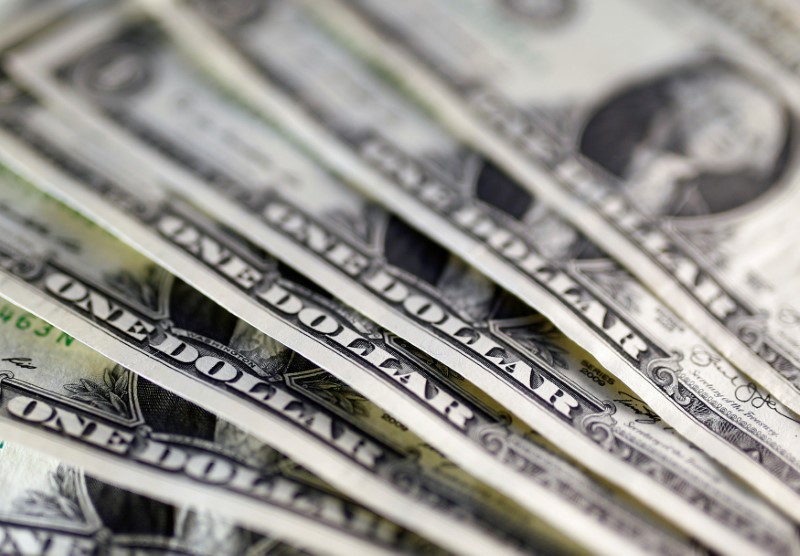By Geoffrey Smith
Investing.com -- It's payrolls day, and the government is expected to confirm that the economy lost over 21 million jobs in the first full month of Coronavirus-driven lockdowns. The market is pricing in expectations of negative interest rates from the Fed next year, while U.S. and Chinese trade teams generated some positive mood music but achieved little else in a phone call earlier Friday. Here's what you need to know in financial markets on Friday, May 8th.
1. The worst payrolls number ever is coming
The Bureau of Labor Statistics will present the first monthly payrolls report to show the full impact of the lockdowns imposed in response to the coronavirus pandemic.
The U.S. economy is expected to have lost some 21 million nonfarm jobs in the month to mid-April, according to analysts polled by Investing.com. The figures will be released, as usual, at 8:30 AM ET (1230 GMT).
The freakish nature of the pandemic means that the report will throw up some odd-looking numbers: analyst point out that average earnings may spike, reflecting the fact that the job losses have been concentrated among more vulnerable, lower-paid workers. The jobless rate, meanwhile, will be colored by how many people are judged to have temporarily left the workforce by not even looking for a new job.
2. China, U.S. trade negotiators dial things down a little
Trade negotiators from the U.S. and China committed to implement the ‘phase 1’ deal agreed between the two countries in January, putting fears of a renewed trade war on the back burner – at least for now.
President Donald Trump had threatened earlier this week to abandon the deal if China – whose own economy has contracted sharply due to the pandemic – failed to buy the promised volumes of U.S. goods.
The two countries promised to enhance economic and public-health cooperation and create a favorable environment for implementing the agreement, Chinese state news agency Xinhua said.
Neither economy is well placed to absorb the reimposition of tariffs that would both choke off activity in China and raise final prices for American consumers.
3. Will the Fed go negative next year?
U.S. interest rate futures now imply that the market expects the Fed to cut official interest rates below zero next year, reflecting a sustained need for extraordinary levels of monetary support for an economy that should – by most forecasts – be bouncing back by then.
Fed funds futures traded as high as 100.025 in New York on Thursday, indicating expectations of a policy rate fractionally below zero. The yields on two- and five-year U.S. Treasury bonds have hit new new all-time lows overnight at 0.11% and 0.28%, respectively basis points. The dollar index fell by 0.2%.
The collapse in Treasury yields and expectations of a long period of expansive global monetary policy have been partly responsible for a rally in Bitcoin that took the cryptocurrency back above $10,000 for the first time in three months earlier. The rally was also supported by news that well-known hedge fund boss Paul Tudor Jones had taken a position in BTC futures, as well as by the impending slowdown in the creation of new bitcoin due to the so-called ‘halving’ of rewards for miners.
4. Stocks set to open higher
U.S. stocks are set to open higher, not least in response to the trade talks between the U.S. and China, even if they did little but generate some positive mood music for the weekend.
Expectations of more stimulus drove the Nasdaq Composite back into positive territory for the year on Thursday, and the Nasdaq 100 futures contract is indicating a further gain of 1.1% at the open. The Dow Jones 30 Futures contract and S&P 500 Futures contract are up in parallel.
European markets were also lifted by news of the rapprochement, albeit in reduced trade due to the public holiday in the U.K. The Stoxx 600 was up 0.7%.
5. Uber's shares soar as Khosroshahi promises jam tomorrow, again
Uber (NYSE:UBER) shares rallied sharply in after-hours trading after CEO Dara Khosroshahi promised further cuts in costs this year to contain losses, while reassuring investors- yet again - that the company would post an operating profit next year.
Losses in the first quarter widened sharply to $2.94 billion as the ride-hailing company wrote down a number of loss-making investments. The highlight of the release was a 52% rise in revenue for the Uber Eats business, although there were no details about whether that makes money.
Both Uber and Lyft (NASDAQ:LYFT) have said they saw healthy rebounds in ride volumes in the last couple of weeks as U.S. states have gradually reopened.
